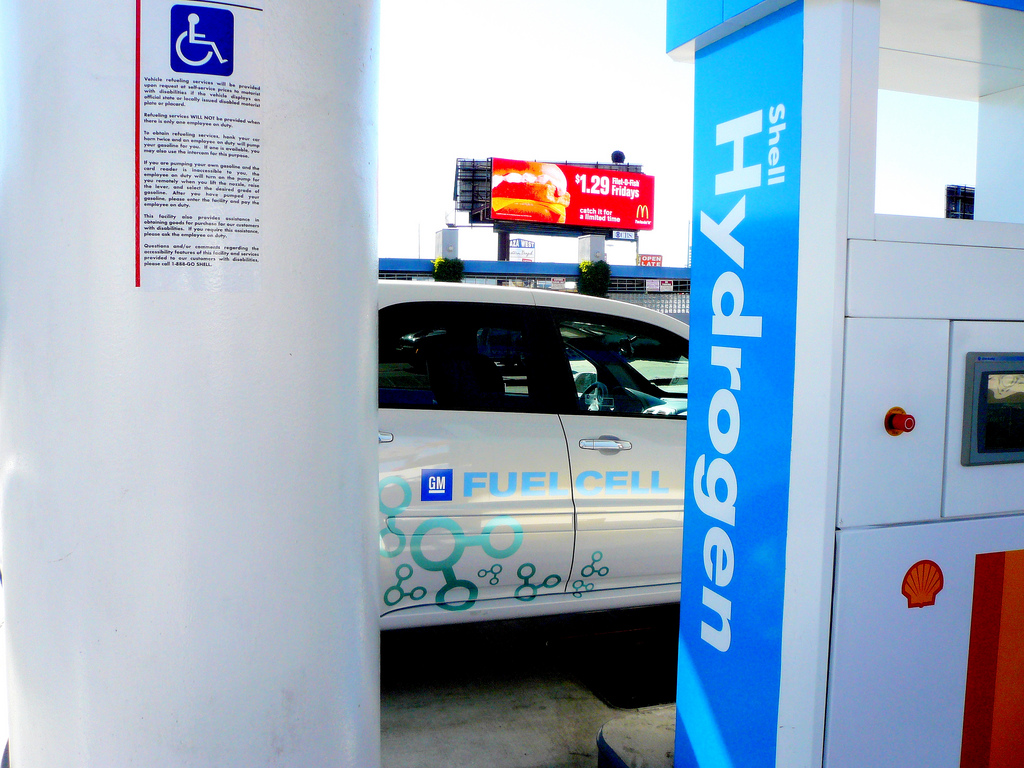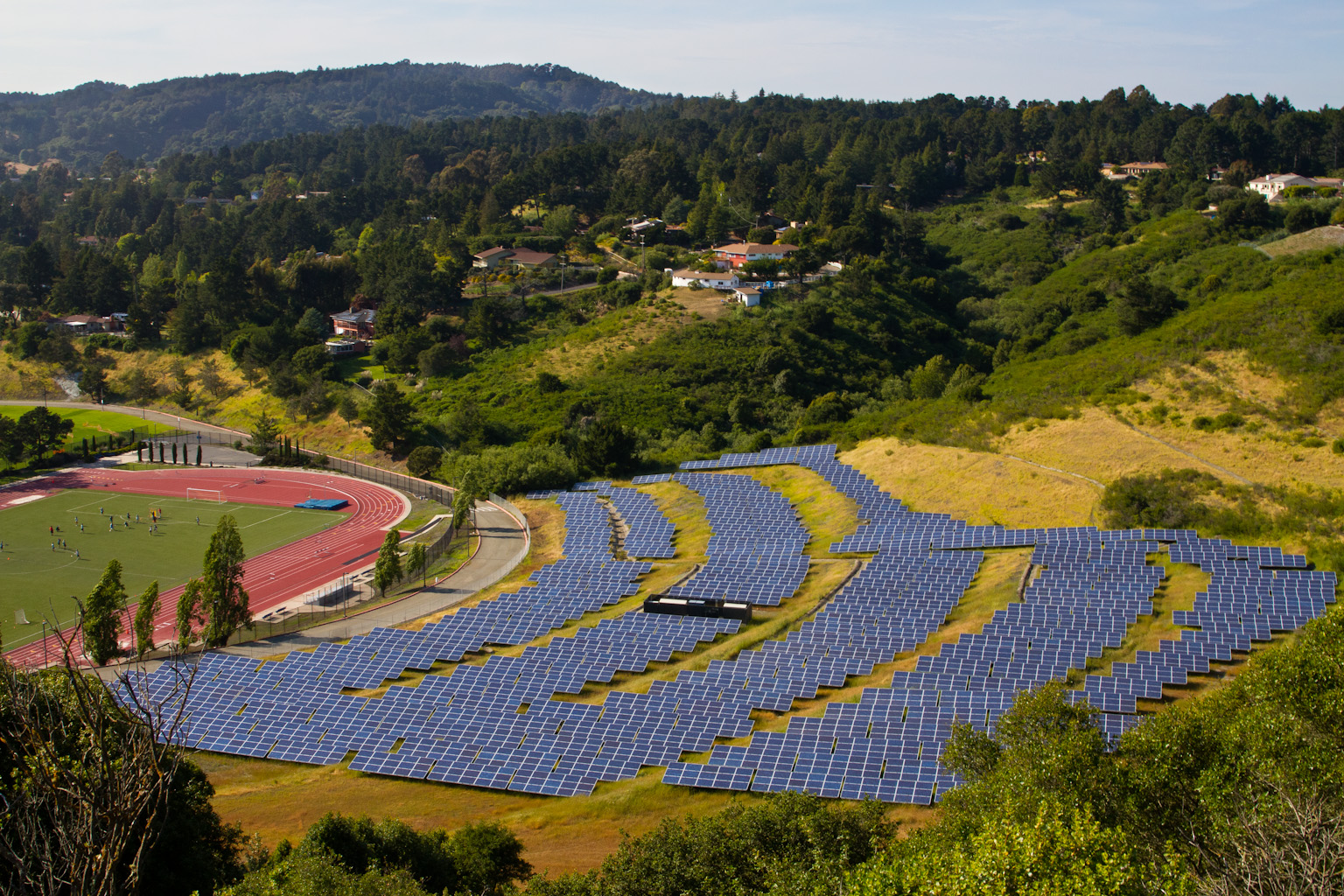Energy
An Aluminum Battery
The battery industry is currently dominated by lithium-ion batteries. We have them in our phones and computers. They power electric cars. And they are increasingly being used to store energy generated by solar panels and other renewable energy sources.
Improving Energy Storage
The transition to sustainable energy sources faces many challenges. One important one is to make those sources as reliable as conventional energy systems. For technologies like solar and wind power, which can’t operate around the clock, an enabling element is effective energy storage. Energy storage is critical for both the electricity grid and for transportation.
Carbon Dioxide Marches On
The end of 2013 marked the first occasional observations of carbon dioxide levels in the atmosphere of 400 parts per million. There is nothing magical about that value, but we do tend to focus on round numbers.
Delivery By Fuel Cell
UPS recently announced a demonstration project that will put a prototype electric truck powered by a hydrogen fuel cell through the delivery company’s challenging paces. Fuel cells have been used in some commercial vehicles to power auxiliary systems, but this is the first time that they will be used to propel a vehicle.
Surging Wind Power In The U.S.
So far, it has been a big year for the U.S. wind industry, which experienced its fastest first-quarter growth since 2009. In total, about 2,000 megawatts of new capacity was installed, enough to power about 500,000 homes. With this addition, wind now produces 5 1/2% of the country’s electricity.
Making Biofuel Cost Effective
Biofuels are considered to be a sustainable alternative to fossil fuels. However, they are generally more expensive than competing fossil fuels. Government subsidies, such as we have for ethanol in this country, have been necessary to make biofuels competitive in the marketplace.
Fossil Fuel Companies And Renewables
There is a tendency to think of the changes in the energy industry as a pitched battle between fossil fuel companies and renewable energy. There is some truth to this, but only to a certain extent. The multi-trillion-dollar fossil fuel industry is made up of businesses dedicated to growth and increased profits. And like businesses in other industries when major changes occur, fossil fuel companies may read the tea leaves and change with the times.
The Methanol Economy
The methanol economy is an idea that was promoted by the late Nobel-prize-winning chemist George Olah since the 1990s. The idea is to replace fossil fuels with methanol for energy storage, ground transportation fuel, and raw material for hydrocarbon-based products. Methanol is the simplest alcohol and can be produced from a wide variety of sources ranging from fossil fuels to agricultural products to just carbon dioxide. Methanol can be used directly as a fuel or it can be reformed into hydrogen, which can then itself be used as a fuel.
A Hydrogen-Powered Train
It seems like something out of a science fiction movie, but a nearly silent train that glides along its tracks emitting nothing but water is a reality. In March, Germany conducted successful tests of the world’s first “Hydrail,” which is a hydrogen-powered, zero-emission train.
Renewable Energy Projects In The Northeast
The seven northeastern U.S. states that make up the Regional Greenhouse Gas Initiative have all set ambitious emissions reduction goals and renewable energy targets that will be difficult to meet. For example, New York has the goal of getting 50% of its electricity from renewable sources by the year 2030.
[Read more…] about Renewable Energy Projects In The Northeast
Increasing Biological Invasions
Invasive species have been a problem for quite some time. Over the years, we have grappled with – among other things – invasive plants from Japan, zebra mussels from eastern Europe, and Asian fungus that kills off ash trees in our forests.
A New Record For Solar Hydrogen Production
Renewable energy may be under attack by the federal government these days, but one federal agency is making great progress on using the sun’s energy to split hydrogen from water. The National Renewable Energy Laboratory, located in Golden, Colorado, recently highlighted two initiatives aimed at the production of renewable hydrogen.
[Read more…] about A New Record For Solar Hydrogen Production
Water From Thin Air
Scientists at UC Berkeley and MIT have demonstrated a water harvester that uses only sunlight to pull liters of water out of the air each day in conditions as low as 20% humidity, a level common in arid areas.
Capital Region Community Solar
Community solar is a cooperative enterprise in which customers can make use of the output of a large local array of solar panels when they are not able to install a solar power system on their own property. The customers of a community solar system can offset as little or as much of their electrical usage as they want by participating in a community solar program.
Storing Energy With Captured CO2
Capturing carbon dioxide instead of releasing it into the atmosphere is a way we can use fossil fuels without it having harmful effects on the climate. Energy storage is a way to address the volatility of clean energy sources like wind and solar power. Excess energy stored during peak production can be used when production ceases, such as when the sun is not shining or the wind is not blowing.
Spray-On Solar Cells
One of the most exciting possibilities for future solar energy technology is that of solar cells that can be sprayed or printed on to surfaces like the windows of skyscrapers, the roofs of sports utility vehicles, or the walls of houses. And the expectation is that such technology would be far cheaper than today’s silicon-based solar panels.
Utility-Scale Solar Power
Solar panels on the roofs of houses have become a familiar sight in recent years, but utility-scale solar – installations of 10 megawatts and greater – are really booming these days. Throughout the United States, more than 10.5 gigawatts of utility-scale solar were added to the electric grid in 2016 – enough to power more than 2 million homes – and at least 8 gigawatts more are scheduled to come online this year.
Solar Power From An Old Mine
For more than a century, a wide stretch of land north of Kimberley, British Columbia, was used for intensive industrial hard-rock mining. The site of Teck’s Sullivan Mine hosted a steel mill, a fertilizer plant and tailings ponds and was rendered treeless.
Old Dog, New Trick
The North-Rhine Westphalia region of Germany was the crucible of that country’s industrial revolution and it still generates a third of Germany’s power, much of it using aging coal plants. However, Germany’s national energy transition program is pushing the country away from coal and other fossil fuels and towards renewable energy sources.



















